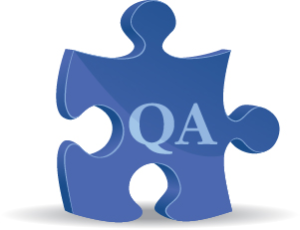At its core, Neuland’s philosophy is to meet or exceed quality levels defined by the customer, while also meeting stringent international standards.
 With multiple customer projects in the works at any given time, contract pharma firms such as Neuland face numerous complex regulatory & quality challenges on a routine basis. Our attitude towards quality has always been to monitor everything.
With multiple customer projects in the works at any given time, contract pharma firms such as Neuland face numerous complex regulatory & quality challenges on a routine basis. Our attitude towards quality has always been to monitor everything.
For us, that means every activity – from order processing and procurement of materials to final shipment of the consignment to our customers – is monitored to ensure product quality. Equally as important, however, is monitoring the various regulatory bodies around the globe in order to stay ahead of upcoming regulatory changes.
Implementing Policy Ahead of Legislation
At Neuland, this translates into a team devoted to obtaining a clear understanding of the possible future direction regulations and standards may take, ensuring that we implement policies ahead of legislation. That applies to cGMP guidelines as well as the requirements of the FDA, ICH, EMEA and EDQM.
Internal monitoring of manufacturing activities – referenced above – may include:
- Sampling and analyzing both products and impurities
- Microbiological testing
- Sampling and testing of all starting materials, as well as all subsequent inputs, intermediates, and
finished products - Analytical methods development & validation
- In-process testing and control of production operations
- Instrument qualification and calibration programs
- Stability testing
- Microbial limit tests & BET testing on products
With complex chemical reactions, quality monitoring takes on even more challenges as products transition across scale-up or are shifted from CRO to CMO. While our integrated and versatile GMP manufacturing facilities are quite capable of handling complex reactions, success at product transfer – internal across scales or from external sources – is something gained through years of experience.
A great deal of planning is involved in ensuring an optimal quality plan across a product’s lifecycle. Analytical methods and in-process controls can differ radically at small- or validation scales from commercial, bulk drug manufacturing.
Bottom line: just as products undergo scale-up, quality assurance & control measures must also be scaled to ensure consistent product quality.










